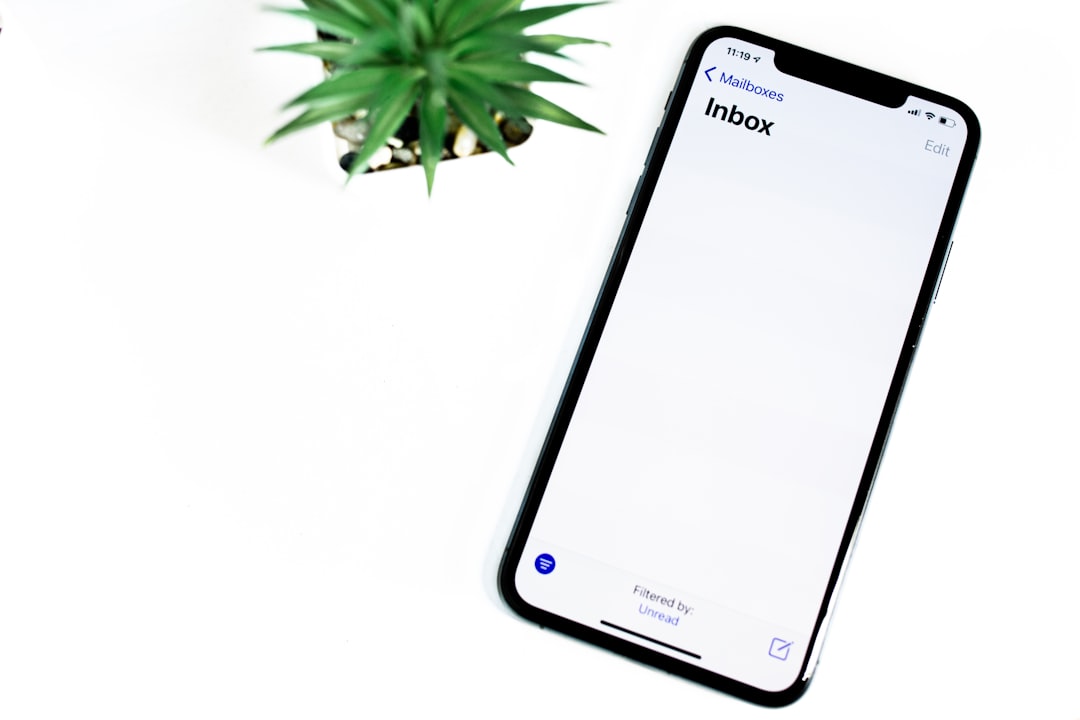Table of Contents
- Introduction
- Choosing the Right Email Template Design
- Incorporating Visual Hierarchy for Clarity
- Utilizing White Space Effectively
- Crafting Engaging Subject Lines and Preheaders
- Optimizing Email Layout for Mobile Devices
- Creating Clear and Compelling Call-to-Actions
- Balancing Text and Visual Elements
- Personalizing Content to Increase Engagement
- Conclusion
- Frequently Asked Questions
Introduction
In the digital age, where inboxes are constantly flooded with messages competing for attention, creating emails that stand out has become an art form. But achieving the perfect balance of readability and engagement can often seem like navigating a labyrinth. What if you could unlock the secret formula to transforming your email campaigns from bland to brilliant?
Welcome to a world where design hacks redefine your communication strategy, captivating every recipient and compelling them to take action.
Our lives are driven by digital interactions, and email remains a cornerstone of effective communication. Yet, with such crowded spaces, the key to true engagement lies not just in content but in how it’s presented. In this article, we’ll delve into a series of insightful design hacks that will supercharge your emails, ensuring they’re not only opened but eagerly anticipated.
| Benefit | Description |
|---|---|
| Increased Open Rates | Learn techniques that attract attention right from the subject line. |
| Enhanced Readability | Discover design tips that keep readers engaged. |
| Higher Engagement | Leverage hacks to encourage readers to take action. |
Choosing the Right Email Template Design
When it comes to optimizing email campaigns, selecting the right template design is crucial for enhancing readability and engagement. A well-designed template not only grabs the reader’s attention but also ensures that the key message is communicated effectively. The template should be simple yet professional, aligning with your brand’s identity. It’s important that the design is clean, with ample white space to avoid overwhelming the reader. This helps in directing the reader’s focus to the essential elements like call-to-action buttons and key messages.
Moreover, the template should be mobile-responsive, as a large portion of emails are opened on mobile devices. This ensures that your audience has a seamless experience regardless of the device they are using. Another aspect to consider is the color scheme and fonts; these should be consistent with your brand and easy to read. Choose a hierarchy of fonts to highlight headings, subheadings, and regular text appropriately.
Lastly, incorporating elements like images, infographics, and videos can significantly boost engagement. However, be cautious not to overdo it, as too many media elements can slow down the loading time. The goal is to create an email template that is not only appealing but also functional, keeping the reader engaged from start to finish.
Incorporating Visual Hierarchy for Clarity
Incorporating visual hierarchy in your email design is crucial for enhancing readability and engagement. Visual hierarchy refers to the arrangement and presentation of elements in a way that signifies their importance. This can be skillfully achieved by using varying font sizes, colors, and spaces. By making the subject line bold and slightly larger, you can instantly capture the recipient’s attention. Subheadings should be distinct from regular text to guide readers through the content with ease.
Another important aspect is the use of colors to highlight call-to-action buttons and essential links, drawing the reader’s eye to key components. A balanced layout with sufficient white space avoids overwhelming the recipient, allowing them to absorb information comfortably. Additionally, aligning text and images strategically can enhance flow and improve overall comprehension. Besides improving aesthetic appeal, clear categorization of information aids in seamless navigation, encouraging readers to engage and react more favorably. The right visual hierarchy not only improves readability but also significantly augments the chances of your emails achieving their intended purpose.
Utilizing White Space Effectively
Utilizing white space effectively is crucial in optimizing the layout and design of your emails to enhance readability and engagement. White space, also known as negative space, refers to the areas in your email that are free from text or images. It helps break up content, making it easier for readers to digest information. By strategically using white space, you can guide the reader’s eye to the most important parts of your message, improving comprehension and retention.
An effective approach to white space usage is to ensure that your email layout is not overcrowded. Break large blocks of text into smaller paragraphs, and use bullet points or numbered lists to highlight key points. This structure helps prevent information overload and keeps the audience engaged. Also, consider the margins and padding around text and images; adequate spacing helps to highlight different sections and prevent the email from feeling cluttered.
Moreover, white space can enhance the visual appeal of your email by creating a balanced and clean design. It allows the reader’s eyes to rest between different elements, ultimately guiding them through your email’s content naturally.
Crafting Engaging Subject Lines and Preheaders
Crafting engaging subject lines and preheaders is a pivotal element in optimizing email layout and design for enhanced readability and engagement. The subject line acts as the initial hook and often determines whether an email is opened or ignored. Therefore, it is crucial to make it concise, compelling, and informative, sparking curiosity while giving recipients a glimpse of the email’s content. Employing questions, emojis, or personalized elements can significantly boost open rates.
Equally important is the preheader text, which complements the subject line by providing additional context or a compelling reason to open the email. Although often overlooked, a well-crafted preheader can directly impact an email’s success. It should be succinct yet rich enough to entice the reader. This snippet text should seamlessly align with the tone and message of the subject line, creating a cohesive preview of the email’s content.
Through analysis and A/B testing, marketers can refine these elements to discover what resonates most with their audience. In conclusion, by investing time in developing strategic subject lines and preheaders that reflect brand voice and audience preferences, businesses can significantly improve email performance and engagement rates.
Optimizing Email Layout for Mobile Devices
Optimizing email layout for mobile devices is crucial for enhancing readability and engagement. Given that a significant portion of emails is now accessed via mobile devices, it’s imperative to ensure that your emails are mobile-friendly. One effective strategy is to embrace a responsive design, which automatically adjusts the layout based on the device’s screen size. This approach ensures that text, images, and buttons maintain their integrity and appeal, regardless of the device used.
An important consideration for mobile email design is font size. Ensure that your font is large enough to be easily read on smaller screens—typically, a minimum of 14px is recommended. Additionally, utilize single-column layouts to enhance clarity and ensure that clickable elements are large enough for easy interaction. Prioritizing content is another key factor; place the most important information at the top to capture attention quickly.
Incorporate white space to improve readability and prevent your email from appearing cluttered. Optimize image sizes to reduce load time, enhancing user experience. Lastly, test your emails on various devices and platforms to ensure consistent performance. By focusing on these aspects, you’ll significantly improve the readability and engagement of your emails on mobile devices.
Creating Clear and Compelling Call-to-Actions
Creating clear and compelling call-to-actions (CTAs) is vital for enhancing email readability and engagement. A CTA serves as a guide, directing your audience toward the desired action. To optimize effectiveness, a CTA should be prominently placed and visually distinct from the surrounding text, usually through contrasting colors or bold fonts.
Ensure that the language used is concise and action-oriented. Phrases such as “Buy Now,” “Learn More,” or “Sign Up Today” convey urgency and compel readers to act promptly. Avoid ambiguous phrases and use persuasive language that aligns with the recipient’s motivations and needs.
Context is equally important. Make sure CTAs are relevant to the email content and provide enough information for the reader to understand the value of clicking through. For instance, if you’re offering a discount, mention the percentage or expiration date for added urgency.
Additionally, test different variations of your CTAs to determine what resonates best with your audience. A/B testing can help identify the most effective wording, design, and placement. Remember, the goal is to facilitate a seamless user experience that encourages engagement and drives conversions.
Balancing Text and Visual Elements
When optimizing the layout and design of your emails, achieving the right balance between text and visual elements is crucial for enhancing readability and engagement. Using too much text can overwhelm the reader, while an excess of images might distract from your message. Striking the right balance helps ensure that your emails are not only appealing but also effective in conveying the intended information.
Start by organizing your content logically. Break down the text into digestible sections with clear headings to guide the reader. Use bullet points or numbered lists for important details, making it easier for the recipient to scan through and pinpoint key information quickly. It is essential to have a harmonious color scheme and proper font sizes to enhance visual appeal without overshadowing the text.
Incorporating visuals like images, infographics, or videos can significantly enhance engagement. However, ensure these visuals complement the text rather than overpower it. Keep the number of images minimal and relevant, optimizing them to load quickly across devices. Alt text should be used to describe visual content, maintaining accessibility and ensuring that your message is consistent, even if images fail to load.
By balancing text and visuals, your emails will be more engaging, effectively increasing the likelihood of achieving your communication objectives.
Personalizing Content to Increase Engagement
In today’s digital landscape, personalizing content is a critical strategy for enhancing engagement in email marketing. Personalization goes beyond addressing the recipient by name; it involves tailoring the content to meet the specific needs, preferences, and behaviors of each subscriber.
By leveraging data analytics, marketers can segment their audience into smaller, more defined groups based on factors like demographics, purchasing history, or interaction patterns. This enables the delivery of targeted messages that resonate with each segment.
Personalized content can take various forms, such as product recommendations based on past purchases, sending birthday discounts, or offering content that aligns with a user’s previous interactions. Moreover, dynamic content insertion allows marketers to swap out elements in real-time, ensuring that the email remains relevant to the recipient’s current context.
Such strategies not only capture the recipient’s attention but also foster a sense of connection and loyalty, as subscribers feel that their unique preferences are acknowledged. As engagement levels increase, so do conversion rates, ultimately enhancing the overall success of email marketing campaigns. Therefore, integrating personalization into email design is essential for achieving higher levels of engagement and ensuring long-term customer retention.
Conclusion
In conclusion, employing these strategic design hacks can significantly enhance the readability and engagement of your email campaigns. By choosing the right template design that mirrors your brand’s identity, integrating an effective visual hierarchy, and utilizing white space wisely, you pave the way for a compelling presentation. Crafting captivating subject lines and preheaders will grab the audience’s attention right from the beginning, while optimizing the email layout for mobile devices ensures seamless accessibility and interaction. Equally vital are the clear and compelling call-to-actions that drive desired actions, alongside a balanced mix of text and visuals to maintain interest without overwhelming the recipient. Personalization plays a crucial role in strengthening the connection with your audience by delivering content tailored to their preferences. When all these elements come together, your emails not only become more appealing but also more effective in achieving your communication goals, ultimately leading to improved conversion rates and sustained customer engagement.

